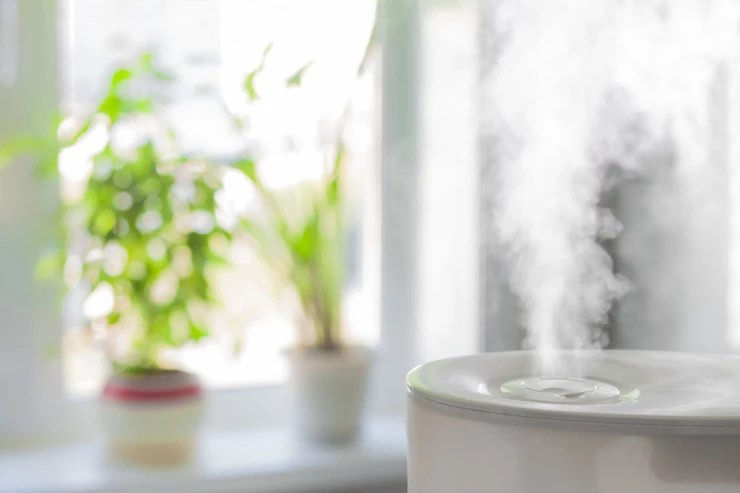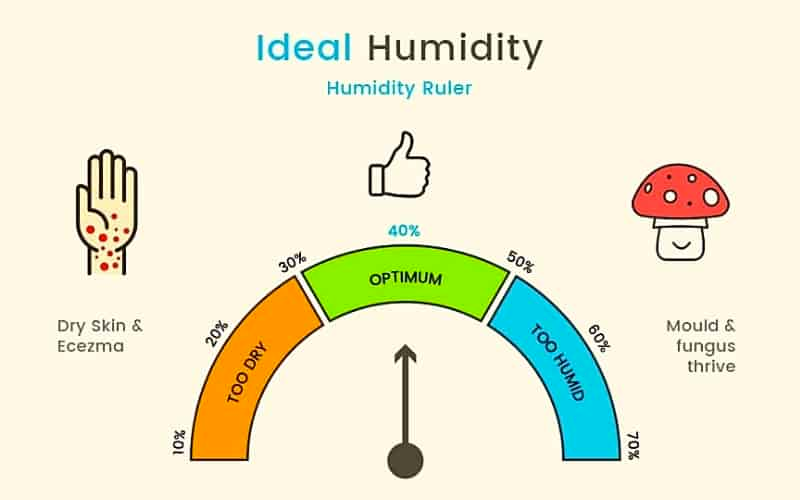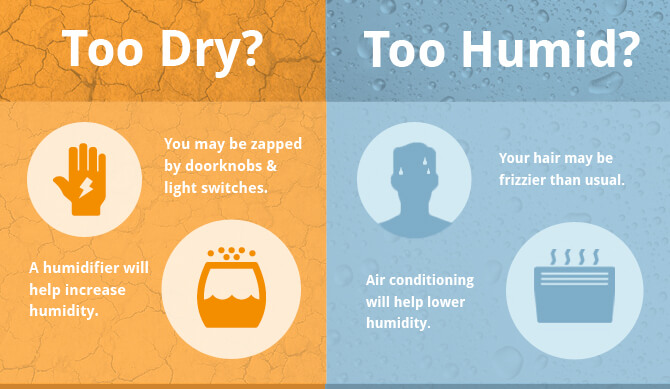How Incorrect Humidity Level Damages your Home and Affects your Health - and How to Control it
- Jonathan Valencia

- Aug 1, 2022
- 6 min read
Updated: Oct 7

The space inside your home can usually be considered a controlled environment, where you can raise or lower the temperature by adjusting the thermostat. Heat is sealed inside during colder months to ensure that everything inside (including you!) can function normally, and in the summer, the air conditioner reduces the heat inside the home, keeping the temperature relatively consistent throughout the year.
However, one aspect of environmental or climate control that often goes overlooked is the humidity inside the home. The ideal relative humidity level ranges from about 40 percent to 60 percent humidity indoors.


How high humidity causes damage in your home
High humidity can cause problems in your home if relative humidity regularly exceeds 60%. When the air contains water vapor above that level, mold and mildew start to grow, while excess moisture can cause rot, damaging your belongings. Let’s look at some potential problems.
Growth of mold and mildew
These microscopic fungi are all around us, but in damp parts of the home, they find the perfect conditions to settle on surfaces and grow.
Mildew usually refers to the white or grey patches that form on surfaces like shower curtains, windowsills, or tiles, while a mold is black or dark green in color and can penetrate deeper into building materials.
Mold can cause health problems, like asthma in children, as well as trigger allergies.
If mold growth is not controlled, it eventually destroys the things it lives on, because the fungus gradually digests materials. This might mean that items like soft furnishings, books, carpets, or soft toys have to be thrown away.
In more serious cases, it causes weakened ceilings or walls and undermines the structural integrity of buildings.
Damaged paintwork and peeling wallpaper
The walls of your home are a prime site for condensation to gather if high humidity is not controlled. The issue is particularly acute with exterior walls, as it’s here that warm, humid air meets a cooler surface.
Flaky paint or curling wallpaper is a sign of excess moisture in the home. It’s important not to just paint or paper over the problem without dealing with the dampness, because it won’t go away.
Rotting furniture, floors, and furnishings
Excess moisture in the home due to high humidity can damage wood, either by creating stains and growths or eventually by causing more serious decay. When furniture is placed close to outside walls, there is a higher risk that dampness will set in.
In the most serious cases, when a problem with excess moisture goes on for a long time, it can cause irreversible damage to hardwood floors, window frames, and other wooden fittings.
Damaged Walls and Brickwork
The walls of your home will generally have air/vapor barriers, intended to prevent warm moist air from penetrating the surface, but these are never perfect. Especially when the weather is warmer, moisture can condense in foundation materials, crawl spaces, and basements, leading to problems with the structure.
When the moisture content in plaster, joists, or studs is constantly changing, it causes materials to swell or contract. As a result, high humidity can lead to cracks, which may call for potentially expensive repairs.
The Impact Of Low Humidity
Homes that are below 40% RH are considered the ideal breeding ground for bacteria and viruses. Humans release water droplets referred to as aerosols and if an individual has an illness, the aerosols that they release contain harmful microbes.
In normal humidified environments, the moisture in the air acts as a barrier, protecting other individuals from contracting the illness. As a result, the aerosols that are in the air will have no impact on others.
However, if the air is dry, the harmful aerosols can move freely and spread, which can lead to other individuals getting infected or becoming ill. Thus, individuals breathing dry air have a higher risk of contracting airborne diseases.
Respiratory Issues
Dry air can be a breeding ground for, mites, mildew, and allergens, which can lead to respiratory issues such as asthma, bronchitis, and sinusitis. Individuals who struggle with asthma or other respiratory illnesses will experience intensified symptoms at home due to dry air conditions.
Dehydration
Even further, low humidity can lead to dehydration, which can cause cracking lips, dry and irritated skin, dry eyes, and nosebleeds. Individuals who suffer from eczema or acne will experience more frequent flare-ups due to dry air. Dry eyes can cause eye soreness, blurred vision, and an increased risk of eye infections.
Static Electricity
Drier conditions tend to result in a higher risk of static electricity buildup, which can lead to electrostatic discharges. This is due to the fact that the air moisture content is a natural conductor, earthing any potential static charge.
The relative humidity must be below 40 percent in order for a static charge to be produced. 40 to 60 percent will still enable for build-up, but at a significantly reduced level due to the fact that the static leaks to the ground through the air.
Conditions above 55 percent RH will never experience static build-up, which is ideal for most applications including office environments and electronics manufacturing facilities.
How to Fix High Humidity in Your Home
So if you already know that you have high humidity problems in your home, what can you do about it? Ventilation is key, and the simplest remedy is often to open windows. A more lasting solution could involve installing air conditioning, to get air circulating through your home, which will carry the moisture away.
If you don’t have effective extractor fans in bathrooms or laundry rooms, or the ventilation hoods in your kitchen aren’t working well, you may need to repair or replace this equipment. Make sure that washing machines and tumble driers are plumbed in properly, and vented so that moisture escapes as it should.
How to Increase Humidity in a Dry House
With a few tricks and a bit of mindfulness, you can easily add moisture to interior air every day. The key is to ramp up natural evaporation while also employing such heat sources as radiators and stovetops to help transfer water vapor into the air quickly if you don't have humidifiers.
It is a good idea to pick up an inexpensive digital thermometer with a humidity gauge so you can monitor moisture levels.
Place containers of water on elevated surfaces to increase humidity in a room.
One of the easiest ways to add moisture to the air is to place bowls or saucers of water on various surfaces around the house. Locate them away from foot traffic to prevent accidental spills, and even higher up to keep them out of reach of children and pets, if necessary. Wide window sills are ideal since sunlight can warm the water and help it evaporate faster.
Boil water on the stove when you’re at home.
Boiling water speedily contributes moisture to the air, but you must be mindful when doing this. Never leave a pot or tea kettle on the burner unattended. Once the water boils away, your pot will get dangerously hot and scorch. Set a timer on your phone if you have to step away from the kitchen for a bit so you won’t forget what you’ve got on the stovetop.
Steam fabrics rather than iron them.
A portable steamer provides an easy way to remove wrinkles from clothing and curtains while adding moisture to the air. These handy devices are much cheaper than humidifiers, require no filters, and heat up in seconds.
Air-dry Your Clothes Inside on a Drying Rack
Do you normally use a dryer when doing laundry? Try a drying rack positioned in a room or living area that you need to humidify instead. As your clothes dry, the moisture from them will evaporate into the air, and in turn, raise the humidity levels. Drying racks are very affordable, and they can fold up making them easy to stow away when not in use. It may take a little longer than using a dryer, but remember you will also reduce your electricity bill with this natural solution.
Add Houseplants to Your Room
Houseplants can help add humidity to your home through a process known as transpiration. Plants absorb water through their roots from the soil, then circulate the moisture through their stems up to their leaves.
As the water reaches the leaves, plants will release moisture into the air. You might want to check our "Grow your Own Food at Home" page.
Related post: 15 Ways to Keep Your House Cool without Air-conditioning































Comments